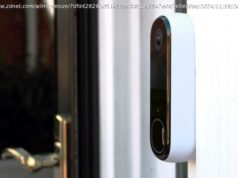This article will focus specifically on TLS and its ability to ensure the integrity, confidentiality, and authenticity of MQTT communication.
In previous articles, we explored authentication and access control mechanisms. Now it’s time to shine a light on the crucial role of Transport Layer Security (TLS) in fortifying MQTT communication. This article will focus specifically on TLS and its ability to ensure the integrity, confidentiality, and authenticity of MQTT communication.Concepts Explained
Before we start, let’s get some key concepts explained.
Handshake: The TLS handshake is a process that establishes a secure connection between the client and the server. During the handshake, the client and the server exchange messages to establish the parameters of the secure connection, such as the encryption algorithms to use, the session keys, and the authentication method.
Cipher Suite: A cipher suite combines encryption, hashing, and key exchange algorithms to secure the connection. TLS supports multiple cipher suites, and the client and server negotiate the cipher suite during the handshake.
Certificate: A certificate is a digital document used to establish the identity of the server or the client. The certificate contains the public key of the server or the client, and it is signed by a trusted Certificate Authority (CA).
Session: A session is a period of communication between the client and the server. During a session, the client and the server exchange data over a secure connection. The session can be terminated by either the client or the server. Overview of TLS
Transport Layer Security (TLS) is a cryptographic protocol that provides secure communication over the Internet. TLS protects sensitive data such as passwords, credit card information, and personal information from unauthorized access or interception. TLS is widely used in web applications, email, instant messaging, and other applications that require secure communication over the Internet.
TLS provides security through encryption, data integrity, and authentication.
Encryption ensures that the data transmitted between the client and the server is encrypted, so unauthorized users cannot read it.
Data integrity ensures that the data is not modified during transmission.
Authentication ensures that the client is communicating with the intended server and not an imposter.
TLS uses a combination of public-key cryptography and symmetric-key cryptography to achieve these security features.
They perform a handshake process in the initial contact between the client and the server. During the handshake, the client and the server exchange messages to establish the parameters of the secure connection, such as the encryption algorithms to use, the session keys, and the authentication method. TLS supports multiple cipher suites, and the client and server negotiate the cipher suite during the handshake. A certificate is a digital document that is used to establish the identity of the server or the client. The certificate contains the public key of the server or the client, and it is signed by a trusted Certificate Authority (CA). Public Key Infrastructure (PKI) establishes trust between the client and the server.Why Is TLS Essential for MQTT Security?
When it comes to MQTT security, TLS plays a crucial role by ensuring MQTT messages’ confidentiality, integrity, authentication, and non-repudiation.






